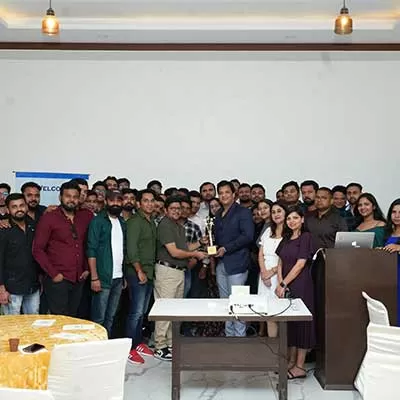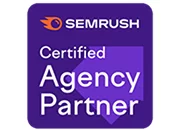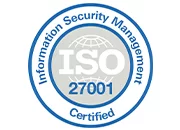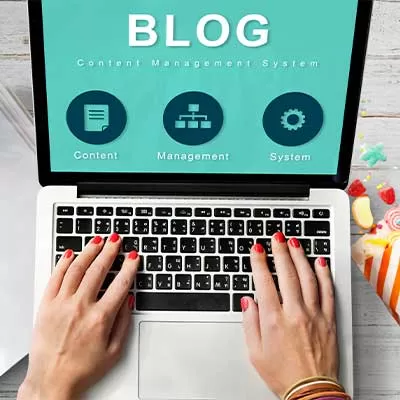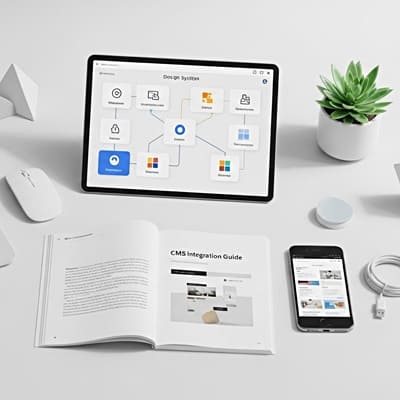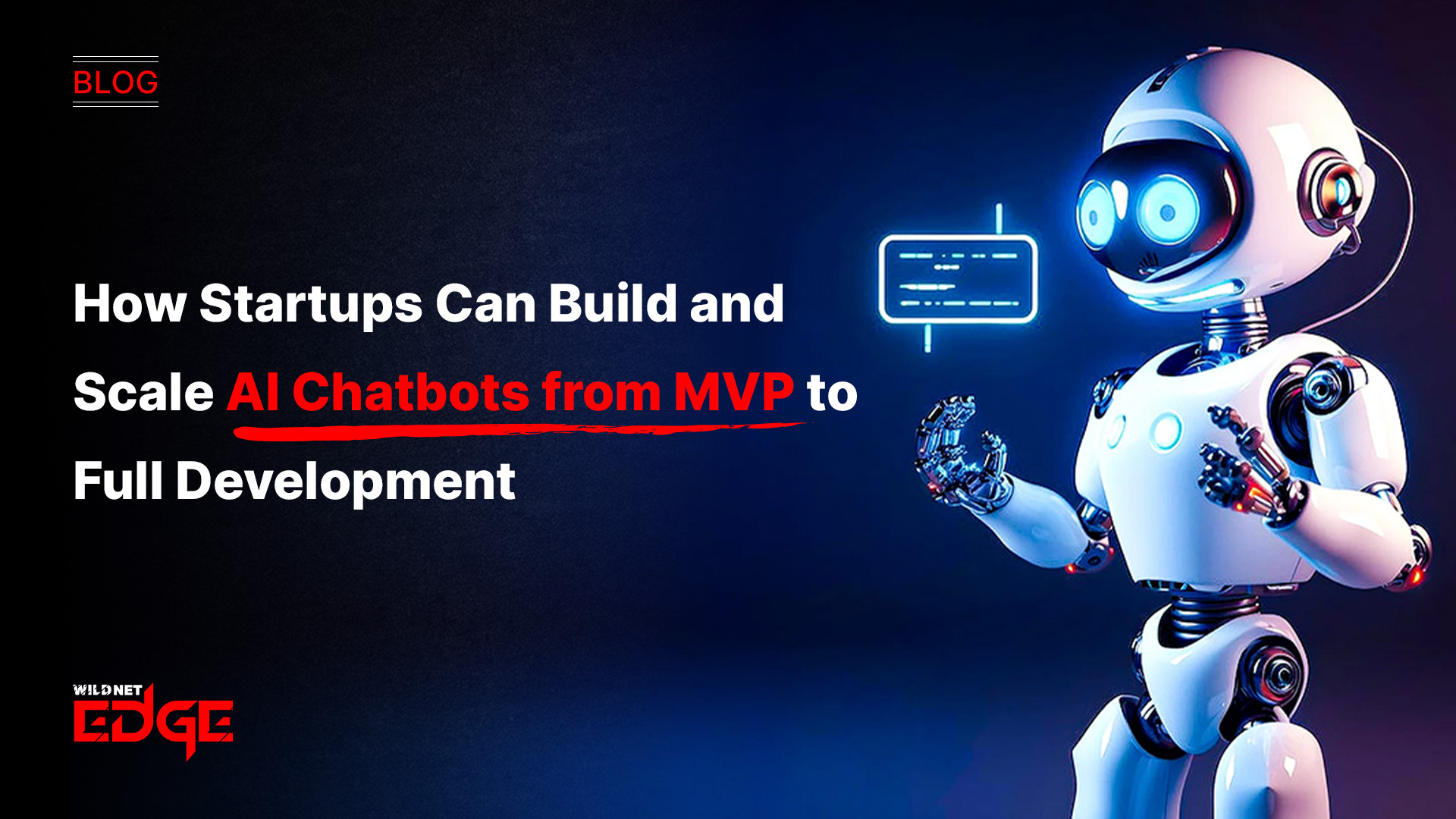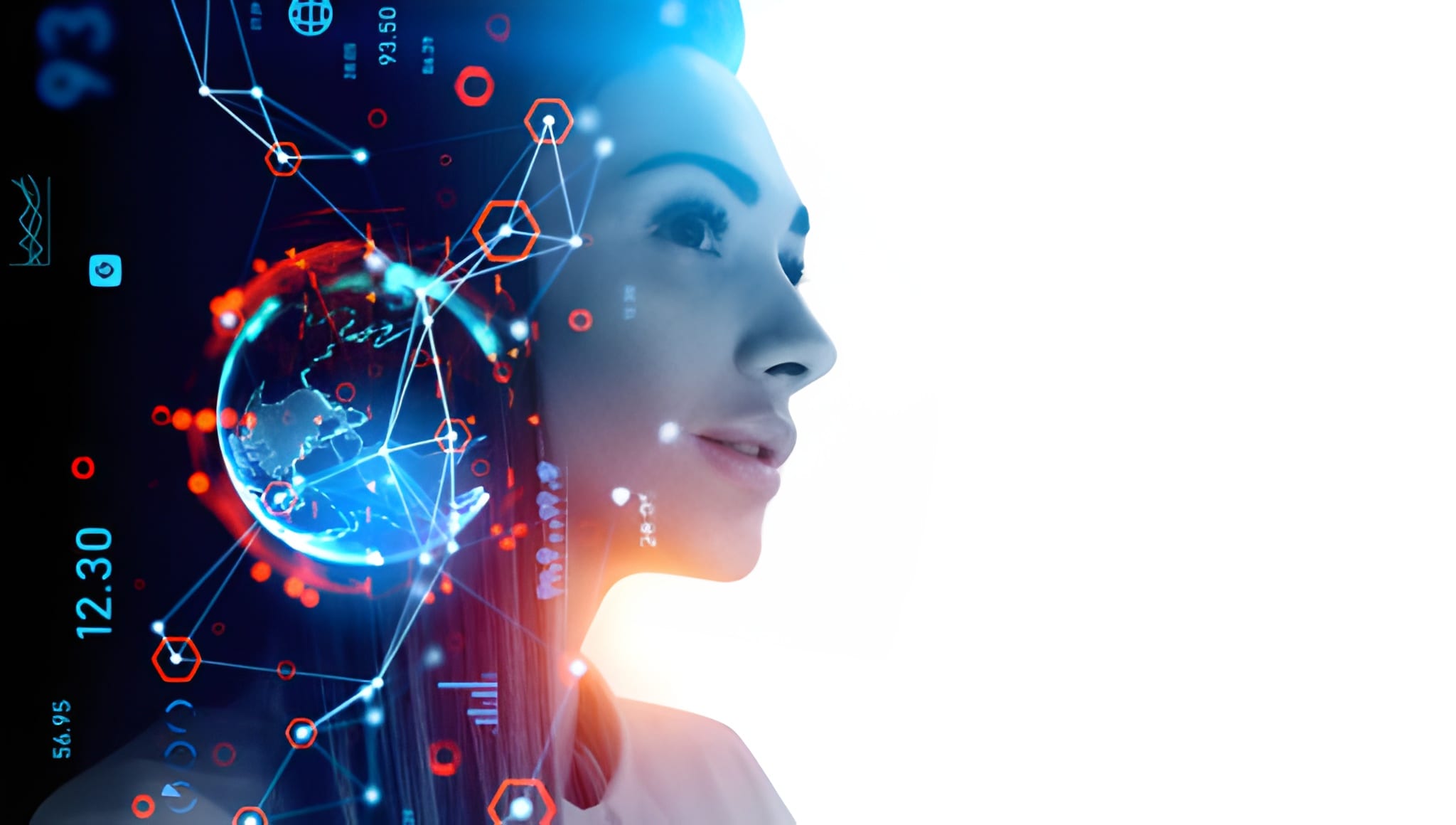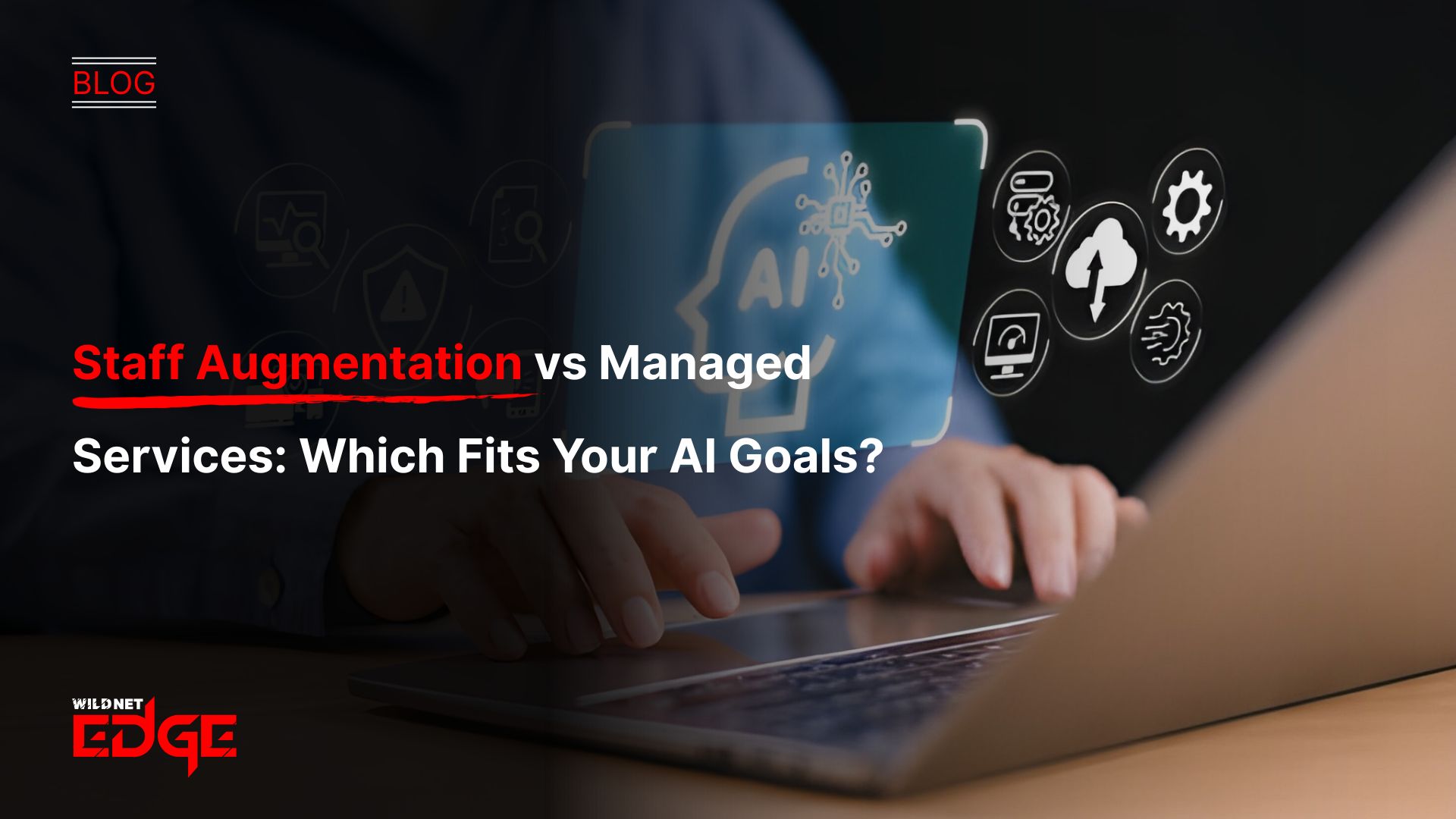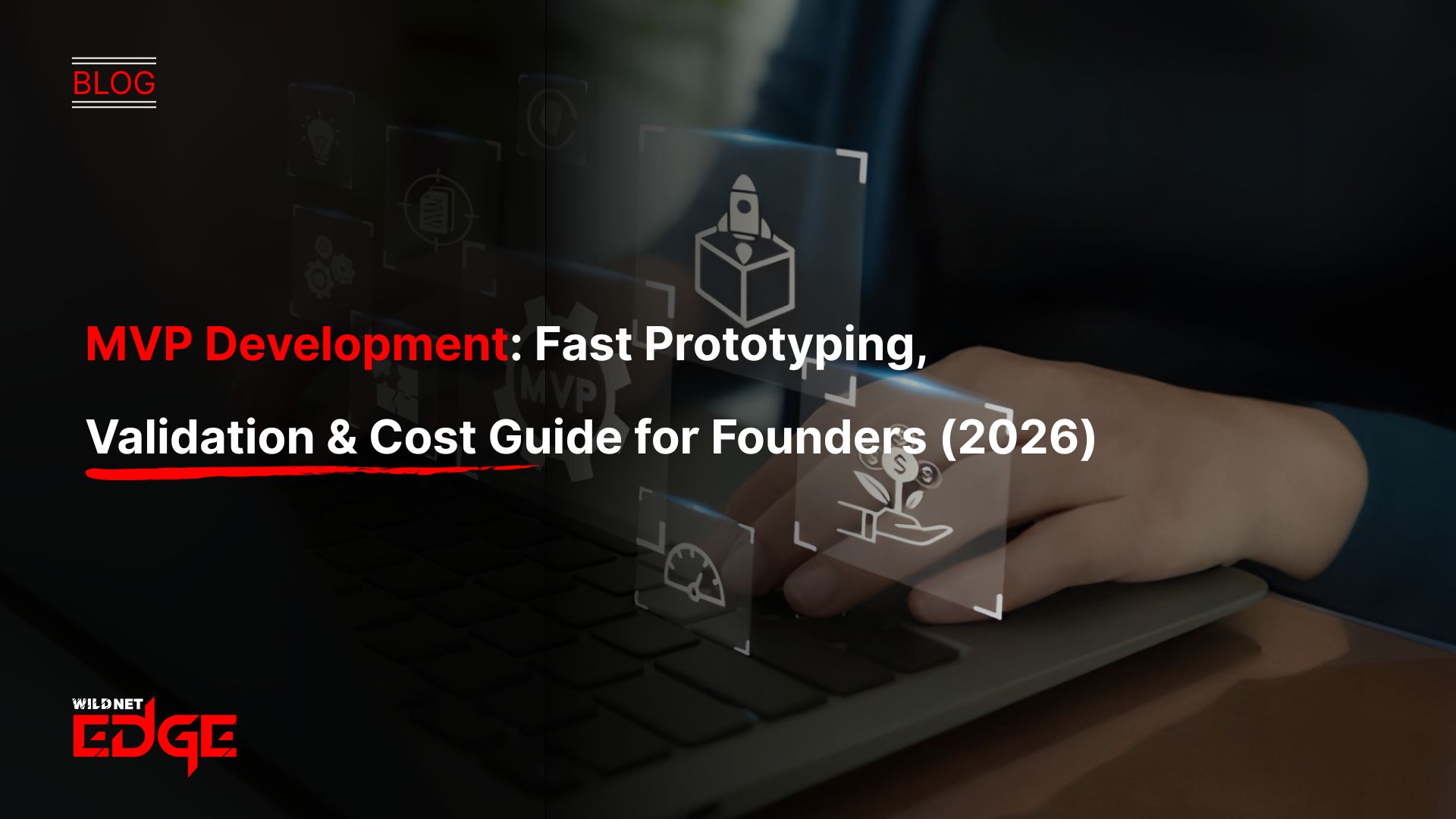If you’re a startup founder, product lead, or just someone trying to keep the wheels turning with a lean team, AI Chatbots from MVP, you’ve probably asked this question:
Should we build an AI chatbot?
Here’s the thing: AI chatbot development isn’t just hype anymore. It’s how startups are handling support without growing headcount. It’s how product teams are onboarding users while they sleep. And it’s how smart businesses are turning conversations into conversions, at scale.
But let’s be real. Building a chatbot that actually works? That’s not just about wiring up a few prompts and shipping it live. It takes the right use case, the right tech stack, and a roadmap that doesn’t fall apart after the MVP.
In this blog, I’ll walk you through how to think about AI chatbot development as a startup. We’ll start small, your MVP, and then scale up to building a real AI assistant that delivers value across support, sales, onboarding, and more.
Let’s dive in.
Why Startups Are Betting Big on AI Chatbot Development
Startups don’t build AI chatbots just because it sounds cool in a pitch deck. They build them because time is money, and no one has enough of either.
When your team is small and your to-do list is infinite, AI chatbot development becomes less of a “nice-to-have” and more of a survival strategy. The right chatbot can do the work of five support reps, handle inbound leads while your team sleeps, and keep users engaged long after they’ve signed up.
Here’s why AI chatbots are winning:
- They scale when you can’t. Chatbots don’t call in sick, burn out, or need onboarding.
- They convert faster. No waiting around for a sales response—just helpful answers on demand.
- They learn from data. The more users talk, the smarter your bot gets.
- They give you leverage. Every startup’s secret weapon is doing more with less, and that’s exactly what AI chatbots deliver.
Bottom line: AI chatbot development isn’t just about tech. It’s about buying back time, delighting users, and giving your team space to focus on what really moves the needle.
AI Chatbot Development MVP: How to Build It Right
Let’s kill the myth right now: your chatbot MVP doesn’t need to be brilliant. It just needs to be useful.
The mistake most startups make? They try to build the final version first, packed with features, edge-case handling, and enough complexity to confuse even the engineers who built it. Don’t do that.
Your MVP should solve one painful problem, fast.
Maybe it’s answering repetitive support questions. Maybe it’s qualifying leads on your landing page. Or maybe it’s guiding new users through onboarding. Pick one job. Nail it.
Here’s what a solid chatbot MVP includes:
- A narrow, clearly defined use case (not “everything for everyone”)
- A reliable NLP engine (think OpenAI, Dialogflow, or Rasa)
- Plug-and-play integrations with your CRM or support stack
- A simple feedback loop (so you know what’s working and what isn’t)
- A fallback route to a human when things go sideways (because they will)
Don’t worry about being fancy. Worry about being helpful. Because the real power of AI chatbot development isn’t in day one, it’s in day 30, when users are still talking to your bot because it actually solves their problem.
Common AI Chatbot Development Mistakes to Avoid
Building a chatbot for your startup? Awesome. Building one that users ignore, break, or abandon? Not so awesome. Unfortunately, that’s where many early attempts at AI chatbot development fall apart.
Startups move fast, but when it comes to AI chatbots, speed without direction leads to avoidable faceplants. Here are the big missteps I see over and over:
- Too broad, too soon
Startups often try to make their AI chatbot do everything. Support, sales, onboarding, lead gen, you name it. The result? A confused, bloated bot that doesn’t do any one thing well. - No real feedback loop
You can’t improve what you don’t measure. If your chatbot isn’t collecting feedback (even something as basic as thumbs up/down), you’re building blind. - Forgetting the handoff
Even the smartest bot needs a backup plan. If there’s no seamless human handoff when the bot hits a wall, users will bail, and they won’t come back. - One-and-done mindset
AI chatbot development isn’t a build-it-and-forget-it project. It’s a living product that learns, adapts, and evolves with your users. If you stop iterating, you fall behind.
Avoid these early errors, and you’ll save months of rework, user frustration, and technical debt.
Scaling AI Chatbot Development from MVP to Growth
So you’ve launched your MVP. It’s live, it’s working, and—shockingly—it’s getting used. That’s your green light. But now comes the real challenge: scaling.
Scaling AI chatbot development isn’t about tacking on features just because you can. It’s about taking what worked in the MVP and layering in more intelligence, more relevance, and more business value—without turning your chatbot into a clunky mess.
Here’s how smart startups scale their AI chatbots the right way:
- Expand intent coverage
Use real conversations to spot new user intents, questions, and edge cases. Don’t guess, learn directly from user behavior. - Personalize everything
Tie your chatbot to user profiles, purchase history, usage patterns, whatever data gives your bot context. Personalization turns helpful bots into trusted ones. - Deepen integrations
Move beyond basic CRM and support tools. Think: billing systems, order tracking, custom product data, internal knowledge bases. Your chatbot should connect to whatever powers your business. - Add intelligence gradually
As you scale, introduce RAG (retrieval-augmented generation), vector search, or fine-tuned models that pull precise answers from your proprietary content. This is where custom AI development services start to shine. - Keep training the bot
No bot is ever “done.” Keep feeding it fresh data, retrain on new edge cases, and monitor performance metrics. AI chatbot development is a loop, not a line.
Scaling isn’t about complexity. It’s about clarity. The best AI chatbots don’t get fancier. They get more focused, more helpful, and more deeply embedded in your customer experience.
Scaling AI Chatbot Development – MVP vs Growth
| Area | MVP Phase | Scaled AI Chatbot Development |
| Use Case | Single, focused (e.g., support FAQs) | Multi-use (support, sales, onboarding, feedback, etc.) |
| Intent Recognition | Basic, manually defined | Expanded, trained from real user data |
| Personalization | Limited or none | Tied to user behavior, history, and preferences |
| Integrations | Basic (CRM, helpdesk) | Deep (billing, product data, internal APIs) |
| Intelligence Level | Rule-based or minimal NLP | AI-powered, RAG, fine-tuned LLMs |
| Training & Feedback Loop | Manual improvement, minimal data | Continuous training with live user feedback |
| Tech Stack | Simple NLP + web interface | Custom stack with APIs, LLMs, vector DBs |
| Business Impact | Proving initial value | Driving automation, conversions, and retention |
When to Move from Rule-Based to Generative AI Chatbot Development
A rule-based chatbot is like a flowchart with a face. It follows a script, branches at “yes/no” decisions, and works until it doesn’t.
If you launched your MVP using decision trees or keyword triggers, that’s totally fine. But at some point, it stops scaling. Users ask unexpected questions. Context gets lost. Your team spends more time updating flows than building your product.
That’s when you know it’s time to evolve and move into generative AI chatbot development.
Here are the signs your startup’s ready:
- Users are asking complex, open-ended questions your bot can’t handle
- You want the chatbot to respond using live product data, documents, or internal wikis
- Your flows are turning into spaghetti, and nobody on your team wants to touch them
- You’re seeing high drop-off rates because users get stuck or confused
- You want to personalize answers based on past user behavior or data
Making the switch isn’t just about plugging in GPT. It’s about using techniques like RAG (retrieval-augmented generation), embedding your own knowledge base, and fine-tuning responses to stay on-brand and on-message.
This is where working with an experienced AI development company becomes critical. You need more than a good LLM; you need smart guardrails, relevant data, and business logic baked in.
How to Ensure AI Chatbot Development Is Secure and Compliant
Here’s the not-so-glamorous side of AI chatbot development: security and compliance. But if you’re a startup handling customer data, and let’s be honest, you probably are, you can’t afford to skip this part.
Because the moment your chatbot collects an email, answers a billing question, or handles a support ticket, you’re dealing with sensitive data. And sensitive data needs guardrails.
Here’s what secure AI chatbot development should include:
- Data encryption (end-to-end):
Everything your chatbot sends and receives should be encrypted, both in transit and at rest. This isn’t optional. - Clear privacy policies:
Your users need to know that they’re talking to an AI, what data is being stored, and how it’s being used. - Region-specific compliance (GDPR, CCPA):
If you operate in, or even just get traffic from, regulated regions, your chatbot has to follow the rules. That includes consent, data deletion, and logging. - Role-based access:
If your bot connects to internal systems, don’t give it the keys to the kingdom. Lock it down with role-based permissions. - Human override:
Yes, even your AI chatbot needs a red button. If things go sideways, a human should be able to step in instantly.
This is where partnering with an AI software development services team that knows the legal and technical side of things pays off. You don’t want to learn about compliance the hard way, through a data breach or a takedown notice.
Choosing the Right AI Development Company for Your Chatbot
Let’s be real—building a smart, scalable chatbot isn’t just about picking the right model. It’s also about picking the right team to build it.
The wrong AI development company will leave you with a bloated bot that sounds smart but delivers nothing. The right one? They’ll help you build a chatbot that aligns with your business goals, works with your tech stack, and evolves as you grow.
Here’s a quick comparison to help you choose wisely:
| Criteria | What You Want | What to Avoid |
| Startup Experience | Built for lean teams and fast iteration | Focuses only on big-enterprise, slow-moving processes |
| AI Software Dev Expertise | Deep in LLMs, RAG, NLP, embeddings | Basic automation scripts and plug-ins |
| Product Thinking | Cares about business outcomes, not just tech | Builds features you didn’t ask for or don’t need |
| Post-Launch Support | Offers improvement cycles, analytics, training | Delivers and disappears |
| Security & Compliance | Built-in data handling, audit trails, access control | Vague answers about GDPR, CCPA, or encryption |
Work with a team that gets both sides of the equation: the tech and the trajectory.
When Your Chatbot Does More Than Just Talk, It Delivers
AI chatbot development isn’t just a checkbox for your product; it’s a competitive edge. For startups, it can be the difference between being overwhelmed by support tickets and scaling with confidence. Between losing leads and converting them instantly. Between user confusion and a smooth, delightful experience.
But building a chatbot that actually delivers? That takes more than an LLM and some prompt engineering. It takes focus. Iteration. Product thinking. And the right dev partner.
That’s where WildnetEdge can help.
We are an AI-first Software Development Company that helps startups build intelligent, scalable AI chatbots that start strong as MVPs and evolve into full-blown AI assistants, integrated, secure, and truly helpful. Whether you need to onboard faster, support smarter, or close leads while you sleep, we’ve built bots that do it. Fast.
From custom AI development services to AI software development built for real-world product goals, we’re the team that turns chatbot ideas into revenue-driving tools.
Let’s build yours.
FAQs
Q. How much does AI chatbot development cost for a startup?
A. An MVP chatbot can cost anywhere from $10,000 to $25,000 ,depending on complexity and integrations. A more scalable AI chatbot with personalization, third-party integrations, and generative capabilities can range from $40,000 to $150,000+.
Q. What’s the typical timeline for AI chatbot development?
A. For startups, an MVP can take 3 to 6 weeks. A full-scale, production-ready AI chatbot may take 8 to 16 weeks, especially if it involves custom AI application development and post-launch optimization.
Q. What platforms can my AI chatbot integrate with?
A. Most chatbots integrate with CRMs (like HubSpot, Salesforce), helpdesk tools (Zendesk, Freshdesk), messaging platforms (WhatsApp, Slack, Messenger), and custom APIs from your backend or databases.
Q. Can my chatbot use our internal documents to answer user questions?
A. Yes. With retrieval-augmented generation (RAG) and custom AI development services, your chatbot can securely access internal knowledge bases, PDFs, product manuals, and more to generate accurate, domain-specific answers.
Q. Do I need coding experience to maintain the chatbot post-launch?
A. Not necessarily. A good AI development company will build a chatbot with an easy-to-manage backend, so your team can train, edit, or monitor the bot without deep technical skills.
Q. How do I know if I should go custom or use a chatbot builder?
A. If your use case is niche, involves complex data, or needs tight product integration, custom AI chatbot development is the better route. Builders are fast for simple flows, but they cap out quickly in terms of flexibility and intelligence.
Q. Is my user data safe with an AI chatbot?
A. It should be, if built right. A secure AI chatbot includes end-to-end encryption, GDPR/CCPA compliance, audit logs, and role-based access. Always ask your AI development company how they handle privacy and compliance.

Nitin Agarwal is a veteran in custom software development. He is fascinated by how software can turn ideas into real-world solutions. With extensive experience designing scalable and efficient systems, he focuses on creating software that delivers tangible results. Nitin enjoys exploring emerging technologies, taking on challenging projects, and mentoring teams to bring ideas to life. He believes that good software is not just about code; it’s about understanding problems and creating value for users. For him, great software combines thoughtful design, clever engineering, and a clear understanding of the problems it’s meant to solve.
 sales@wildnetedge.com
sales@wildnetedge.com +1 (212) 901 8616
+1 (212) 901 8616 +1 (437) 225-7733
+1 (437) 225-7733


